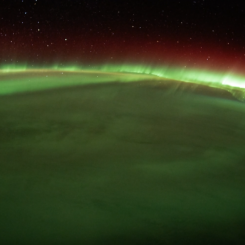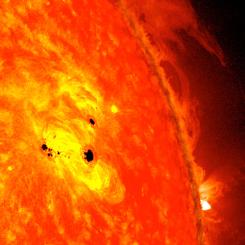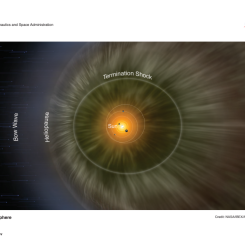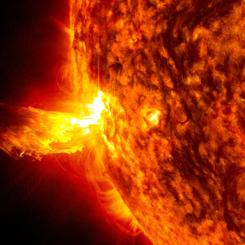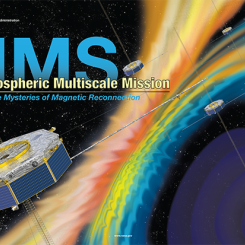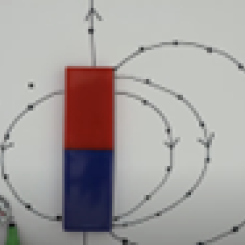Interactive Models
Comparing Earth and Space Weather StoryMap
Overview
Learners will explore differences between weather on Earth and space weather and the hazards of each.
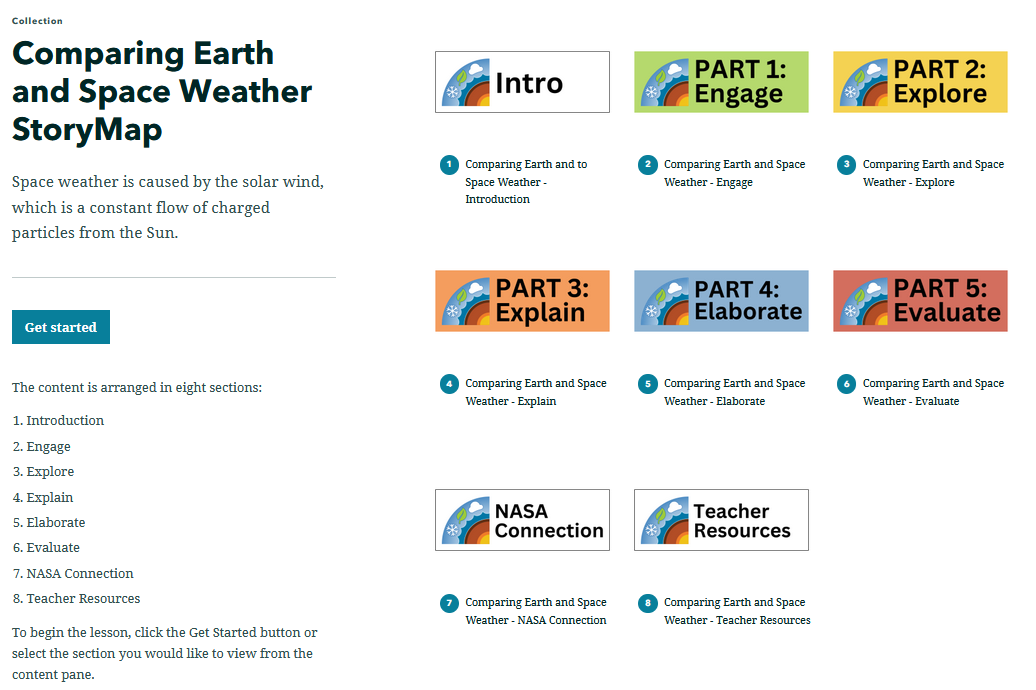
Materials Required
Resources Needed Per Student:
- Student Data Sheet or Student Data Form
- Computer/Tablet
- Internet Access
- Link to Comparing Earth and Space Weather StoryMap
Directions
- Using an internet accessible device, students open the link to the Comparing Earth and Space Weather StoryMap to begin their exploration of this phenomenon.
- Distribute the Comparing Earth and Space Weather StoryMap Student Data Sheet. Have students navigate on their own through the Engage, Explore, Explain, Elaborate, and Evaluate tabs of the StoryMap to answer the questions and complete the activities on their student data sheet.
Teacher Note
Teachers who are interested in receiving the answer key, please complete the Teacher Key Request and Verification Form. We verify that requestors are teachers prior to sending access to the answer keys as we’ve had many students try to pass as teachers to gain access.

Disciplinary Core Ideas:
- PS1A: Structure and Properties of Matter
- PS2B: Types of Interactions
- PS4A: Wave Properties
- PS4B: Electromagnetic Radiation
- ESS1A: The Universe and its Stars
- ESS1B: Earth and the Solar System
Crosscutting Concepts:
- Patterns
- Cause and Effect
- Structure and Function
Science and Engineering Practices:
- Developing and Using Models
- Identify the differences between weather on Earth and space weather, including where it occurs, the causes, and hazards.
- Describe the role of the magnetosphere in space weather.
- Differentiate between the composition and behavior of the Sun and Earth’s atmosphere, wind, and magnetic fields and compare the seasons and cycles that occur in each type of weather.
- Where does each type of weather occur?
- What causes each type of weather?
- Why is it important to be able to predict both types of weather?
- Internet Required
- One-to-One (tablet, laptop, or CPU)
- One-to-a-Group


